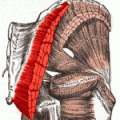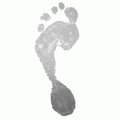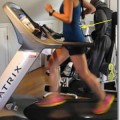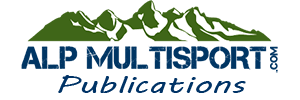The Case of a Runner with Hip Drop
In a previous article on this topic, I discussed the important role that the hip abductors play in stabilizing a runner through the gait cycle. The hip abductors—gluteus medius and gluteus minimus—are often weak compared to the hip adductors in runners, which leads to a dropping of the hip opposite the planted leg. If left uncorrected, this can lead to overuse injuries. In this article, I delve into this issue further through a case study and discuss how you can use video analysis to analyze your own running gait.
The images below show the anatomy of the hip abductors of the right leg. In the image on the left, the origin and insertion of the gluteus medius is highlighted in red. The belly of the muscle is cut away to expose the gluteus minimus below it (which is highlighted in red in the image on the right). Together, these images illustrate how the gluteus medius is comprised of a thick, radiating muscle that covers the smaller gluteus minimus beneath it. When these muscles contract, they move the leg away from the centerline of the body. This is abduction (the Latin prefix ab- meaning “away from” as opposed to the prefix ad- which means “to” or “toward”).
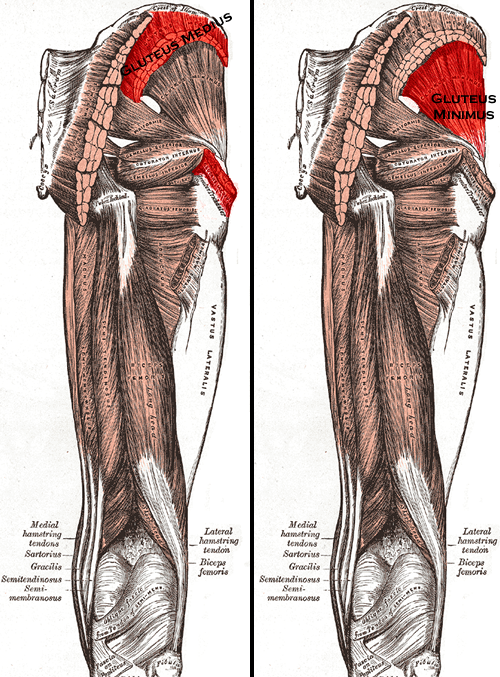
As noted in the previous article, when the left leg, for example, is lifted off the ground (as during running) the contraction of the right hip abductors works to maintain the hips in a level position. If the right hip abductors are weak or not firing; then the left hip drops. This hip drop can potentially lead to iliotibial (IT) band or patellofemoral pain problems in the planted leg (in this example, the right leg).
In addition to the standing test (discussed in the previous article), to check the strength of your hip abductors you can use video to analyze how your hip abductors function while running. The filming can be done either on a treadmill or outside. For the purpose of this test, the camera should capture the runner from either head on or from behind. When filming a runner outside (as opposed to on a treadmill), be sure to pan the camera to keep the runner the same size as she runs toward or away from you. Before filming, the runner should be adequately warmed up; and it is a good idea to film at different speeds as different issues often arise as the pace varies.
Once you have captured the footage, begin your analysis by watching the video several times, slowing it down and freezing frames to examine the angles of the hips during each foot plant. Below are video stills from a runner as each foot is planted.
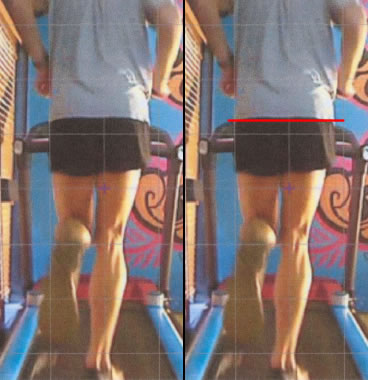
As can be seen in the first set of images of the right leg stance, the runner’s hips are in a nice level position. There is no hip drop on the left side as the right foot is planted on the ground. This tells us that the runner’s right hip abductors are sufficiently strong and firing appropriately to stabilize the core as he moves forward through the sagittal plane.

When looking at the second set of images, however, we can see that the right hip drops during the left leg stance. This alerts us to a muscle imbalance in the left hip abductors. It could also mean that, even if the left hip abductors are sufficiently strong, they are not firing adequately. Not surprisingly, this runner has experienced intermittent IT band and patellofemoral pain in the left leg during high mileage periods.
For this runner, attention to strengthening and ensuring proper engagement of the left hip abductors will be key to improved form and injury prevention. Since this runner has noticed that he tends to stand more on his right leg throughout the day, one supplemental aspect to his regular training will be to spend more time standing on his left leg with level hips. He can incorporate this into daily activities, such as working on his computer at a standup desk, cooking dinner, brushing his teeth, etc. This will constitute his “bonus” or “secret” training in addition to the functional strength exercises, running drills and neuromuscular activation techniques presented in the previous article. Together, all these activities will lead to improved form and a healthier running career.

